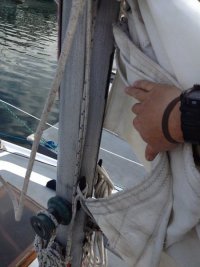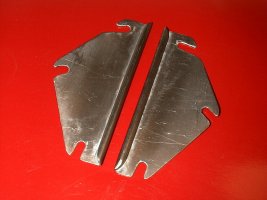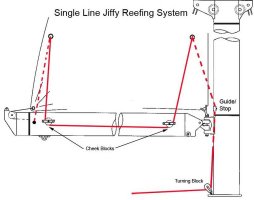Gregoryulrich
Member III
Mainsail Reefing Dilemma
Apologies for the sideways pic. I have no reefing system on my main sail which presented a problem a couple weekends back when the wind piped up to sustained 20 knots off Catalina. The main problem I see is that the feeding slot for the slugs is really high up off the boom and there are two slugs which will hit the sail stop if I try to get the luff cringle on the boom. I guess I can take the sail stop out every time it anticipate a reef but that seems like a PITA. Anyone have any suggestions on how I can overcome this?

Apologies for the sideways pic. I have no reefing system on my main sail which presented a problem a couple weekends back when the wind piped up to sustained 20 knots off Catalina. The main problem I see is that the feeding slot for the slugs is really high up off the boom and there are two slugs which will hit the sail stop if I try to get the luff cringle on the boom. I guess I can take the sail stop out every time it anticipate a reef but that seems like a PITA. Anyone have any suggestions on how I can overcome this?

Last edited:



